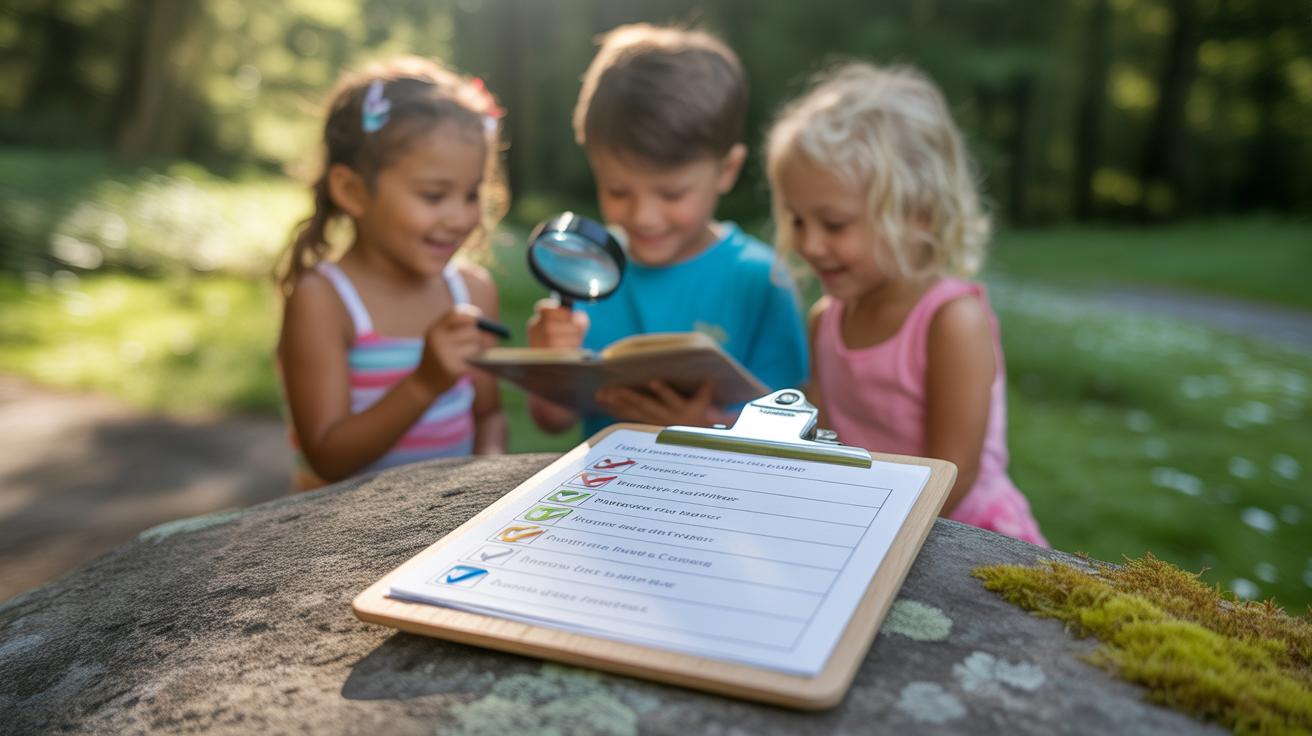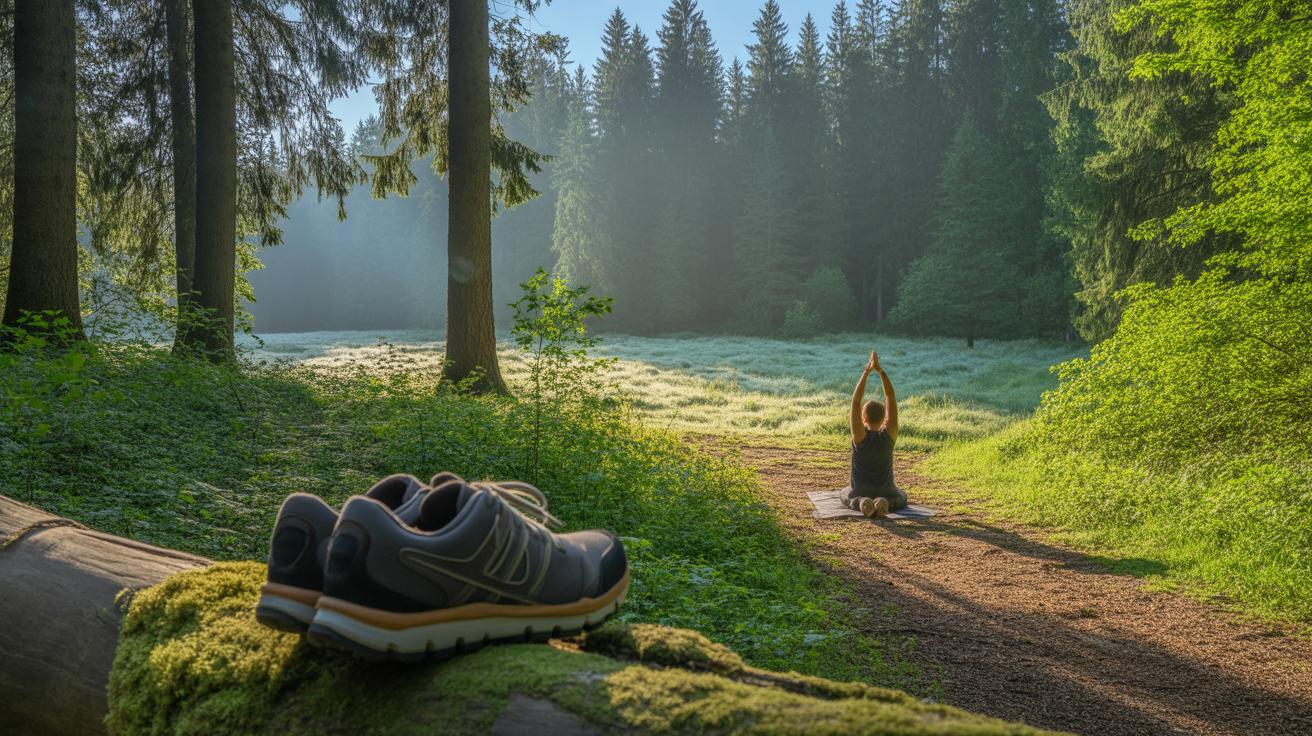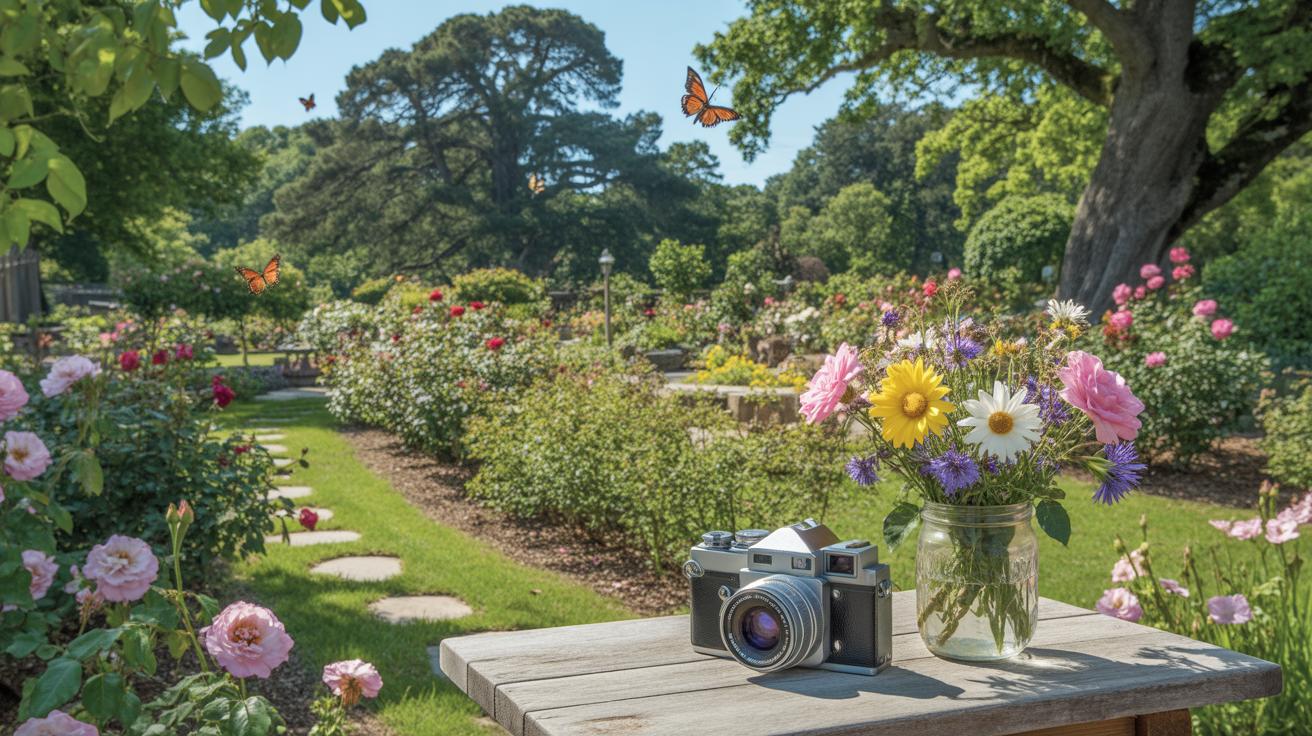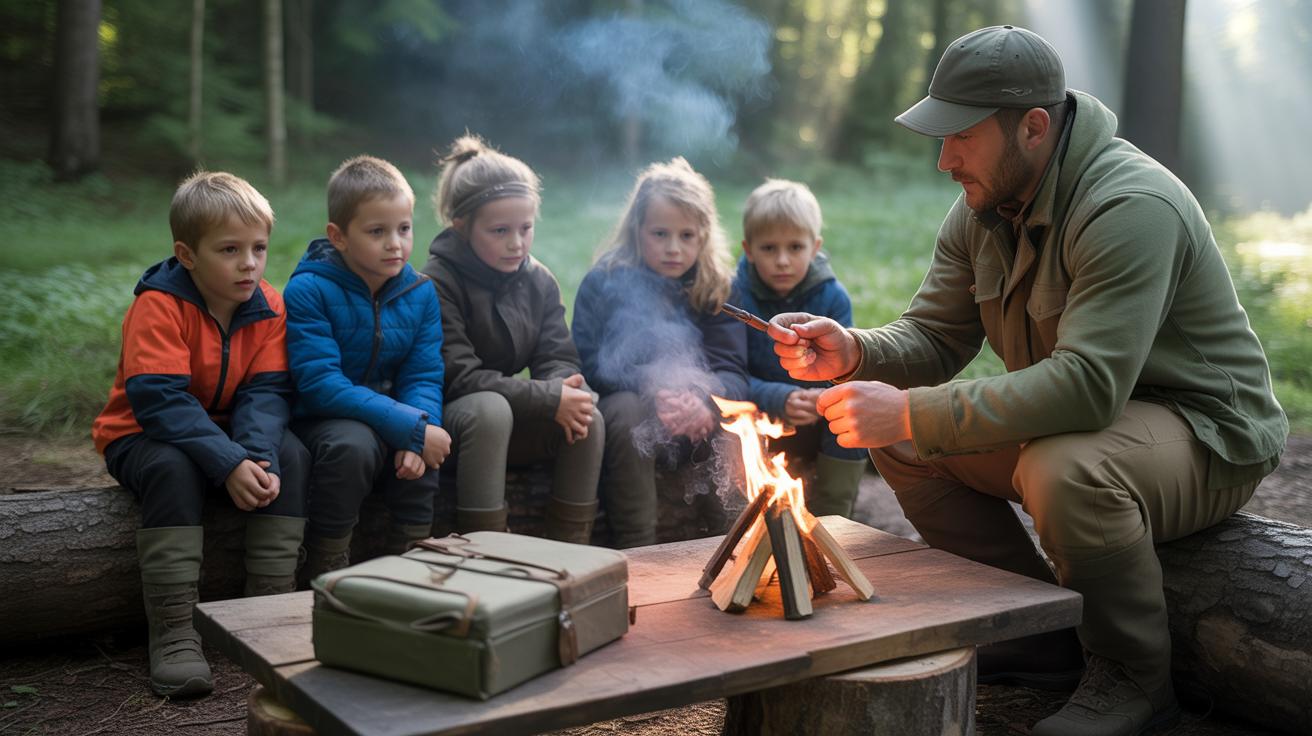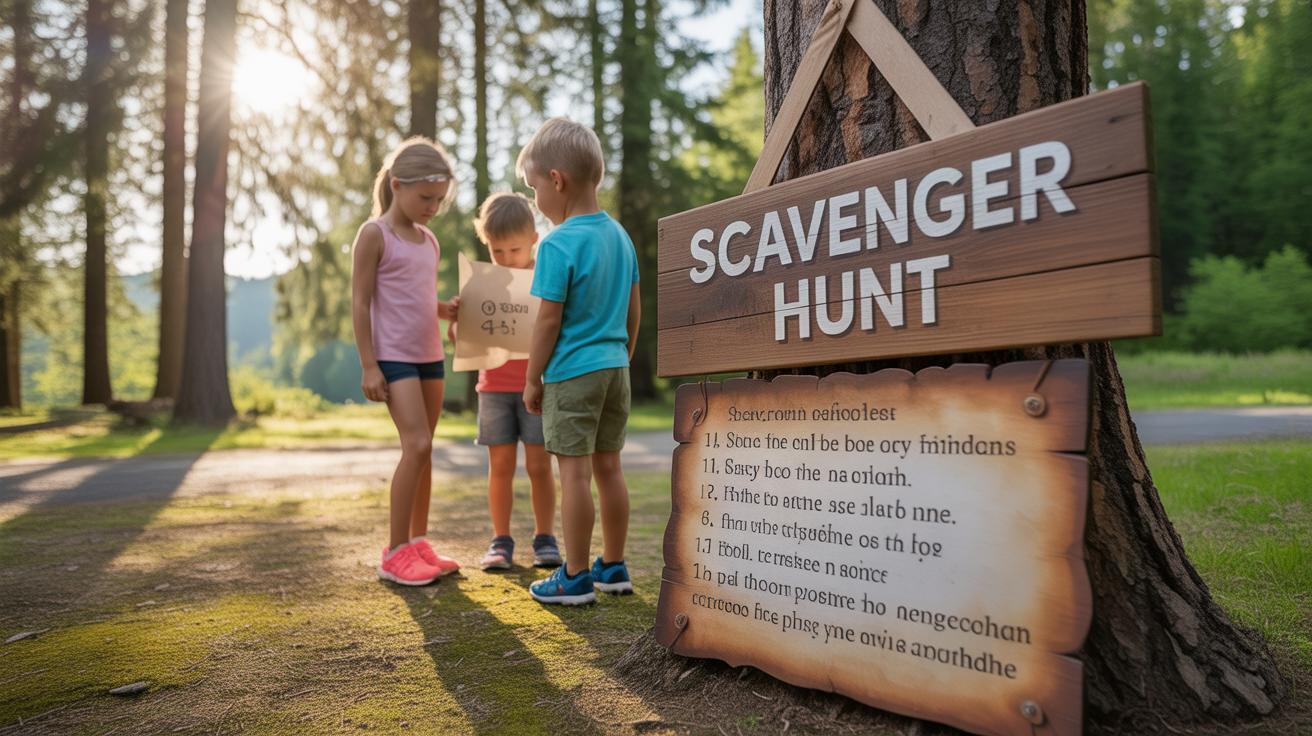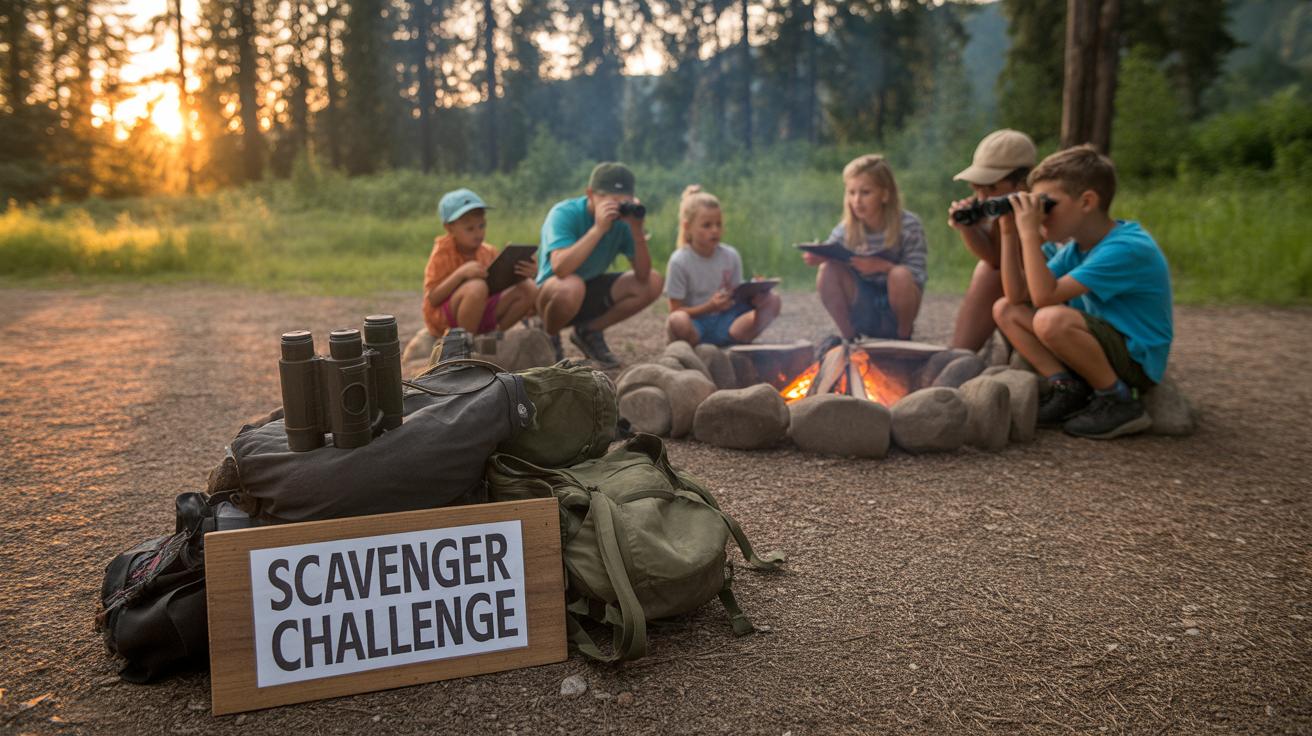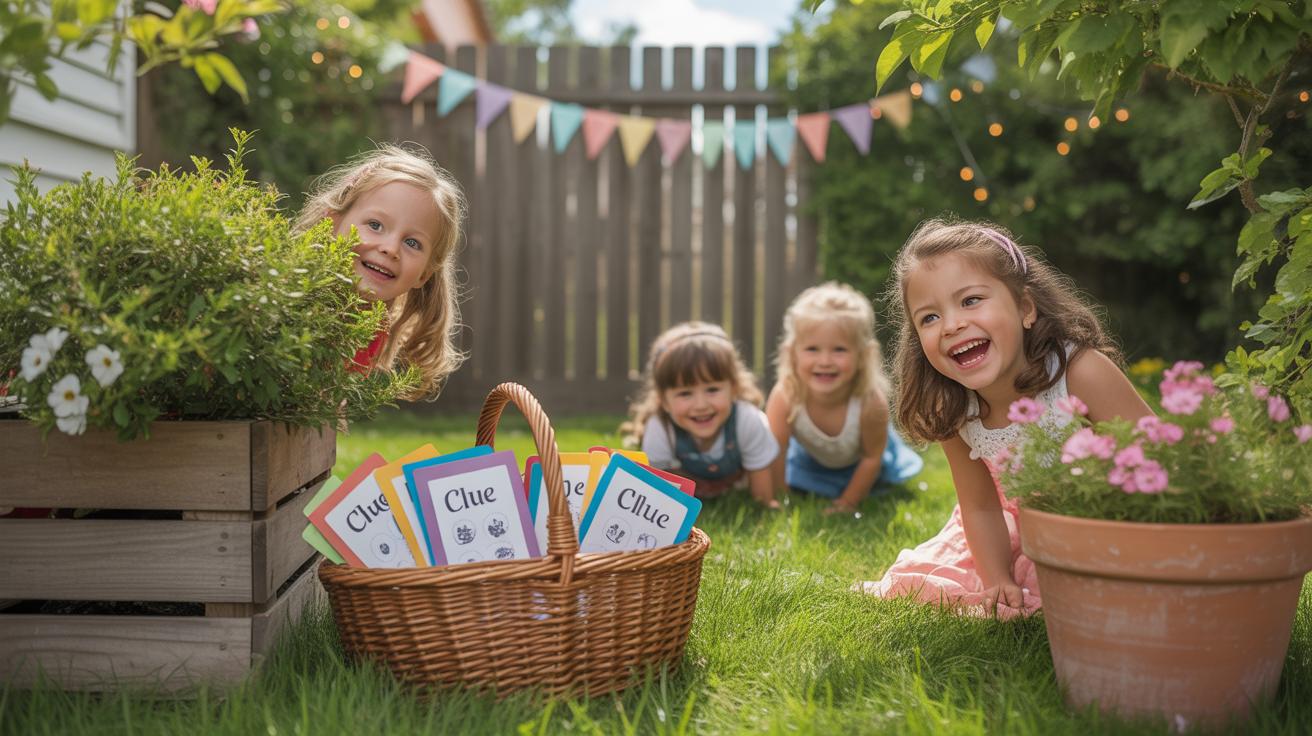Introduction
Nature scavenger hunts offer a fantastic way to engage children with the outdoors. These hunts encourage kids to explore their environment, discovering plants, animals, and natural objects along the way. A Creative Checklist Nature Scavenger Hunt For Kids is not only fun, it promotes learning and appreciation for nature.
In this article, you will find practical ideas and tips to create an exciting nature scavenger hunt. It will also cover how to plan, what to include in the checklist, safety concerns, and ways to make the activity more enjoyable and educational for your children.
Preparing Your Kids For The Adventure
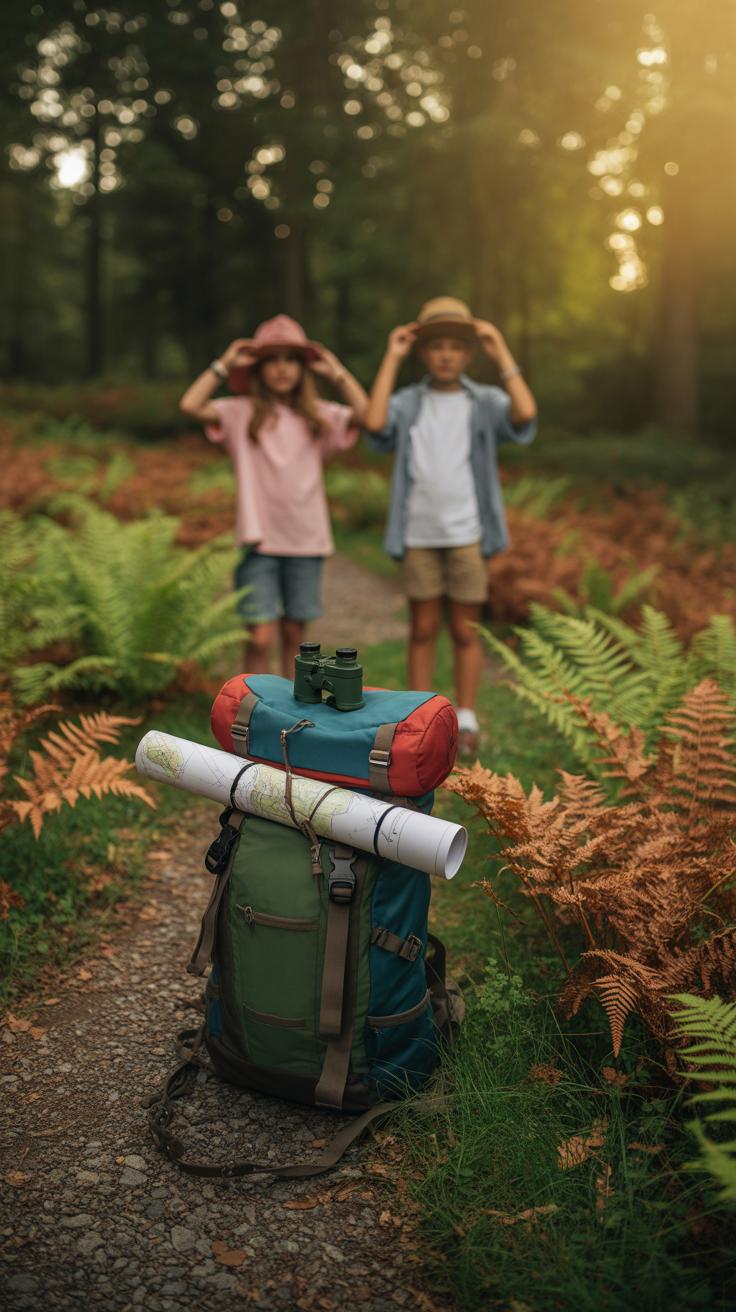
Before heading out, it helps to talk with your kids about what to expect. Let them know the scavenger hunt is about exploring and noticing things, not just rushing to find items. Sometimes, kids get caught up in competition or want to finish quickly, but reminding them to take their time can make the experience more meaningful—and less frustrating.
Packing the right gear matters too. Bring simple essentials like a water bottle, comfortable shoes, and maybe a magnifying glass for a closer look at tiny insects or leaf patterns. A small bag or basket for collected items keeps things organized and reduces the chance of losing interesting finds along the way.
Safety should never be an afterthought. Talk about where the kids can—or can’t—go, especially if you’re near water, cliffs, or dense woods. Remind them not to touch unfamiliar plants or critters without asking. Sometimes, you’ll find kids eager to pick every flower or bug they see. Setting limits beforehand helps avoid worries later.
Also, think about the length of the hunt. Young children might quickly get tired or distracted, so keeping it short and sweet usually works best. You might find that flexibility in how long you stay outdoors makes the whole thing more enjoyable for everyone.
Lastly, encourage questions and curiosity. If a child wonders why a leaf is a certain color or what kind of bird they see, try to explore the answers together. These moments often become the best parts of the adventure, even if they derail the checklist for a bit.
Preparing The Adventure with Kids
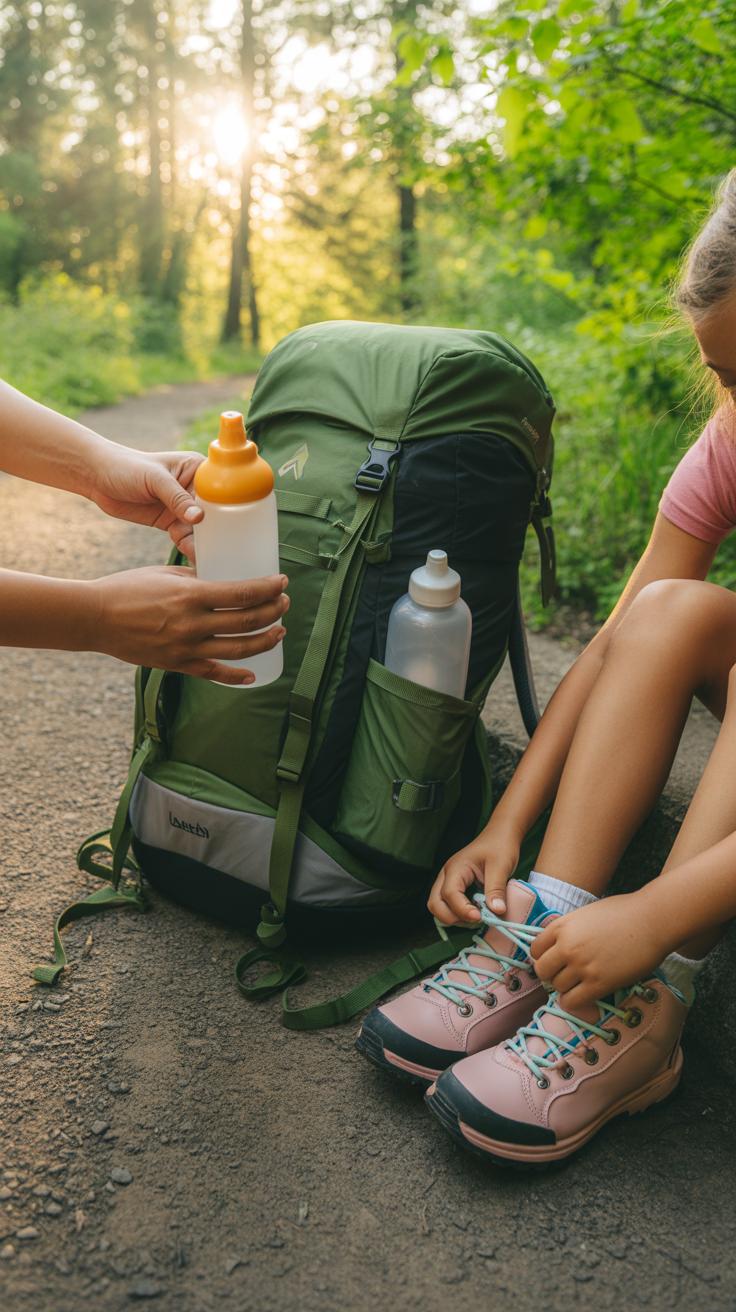
Getting kids ready for a nature scavenger hunt takes a bit more than just enthusiasm. Setting clear expectations can help avoid frustration. Talk about what you’ll be looking for and remind them that finding every item isn’t the goal. Sometimes, the joy is just in the search itself. It might be helpful to discuss the pace too—whether you’ll move quickly or take your time exploring.
Packing the right gear often makes or breaks the experience. Besides the obvious water bottles and sunscreen, I’ve found a magnifying glass sparks curiosity like nothing else. Bug spray too—because, well, bugs don’t ask permission. Don’t forget comfortable clothes and sturdy shoes. Kids might not complain at first, but tired feet or itchy clothing can suddenly change the mood.
Safety should always be part of the prep talk. Remind children to stay on marked trails—tempting as it may be to wander, it keeps things safer and easier to manage. Keeping an eye out for insects or plants to avoid is also worthwhile. If you’re heading into an unfamiliar spot, a little supervision goes a long way, even if your kids are confident explorers. Sometimes, just knowing an adult is nearby offers that little extra peace of mind.
Creating A Custom Checklist For Kids
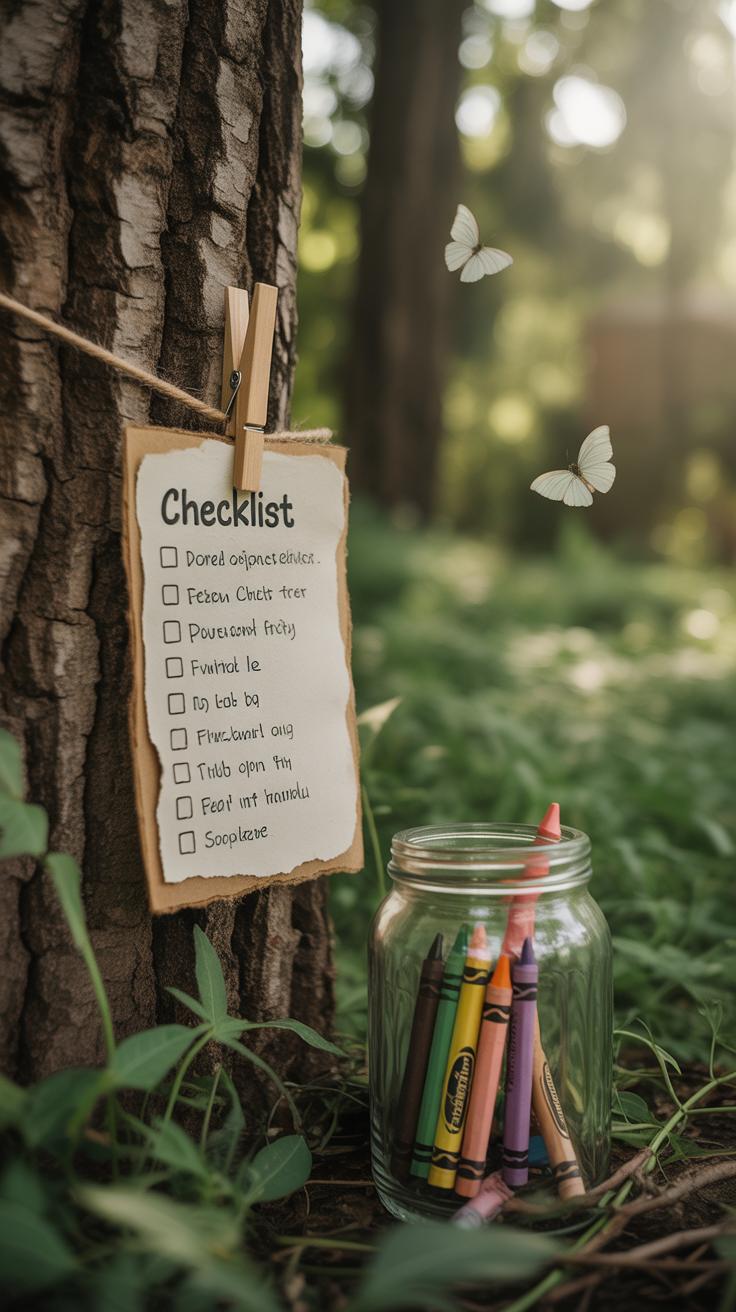
Designing a checklist for a nature scavenger hunt really depends on where you’re heading and who you’re taking along. If your kids are younger, shorter lists work better—maybe five or six easy-to-find items. Older kids might enjoy a longer list with more challenge, like spotting specific insects or identifying different leaf shapes. Think about their interests, too. If a child loves bugs, toss in a beetle or caterpillar. For nature lovers who prefer plants, include a wildflower or a pinecone.
Matching your list to the local environment keeps things realistic. No point asking kids to find a cactus in a leafy forest setting. Instead, focus on what’s actually around—moss on trees, different birds, or even sounds like frog croaks. You might want to sketch or print pictures to help kids recognize tricky items.
Adapting The Checklist For Different Seasons
Seasonal shifts change what you’ll find, so tweaking the list throughout the year helps keep the hunt fresh and fun. In spring, look for budding flowers, baby birds, or fresh green leaves. Summer’s a good time for spotting butterflies, ripe berries, or dragonflies near water.
Fall brings colorful leaves, acorns, and migrating birds. But winter? That gets tricky if snow covers the ground. Some hunts focus on animal tracks, evergreen cones, or winter birds. You could even include listening tasks, like hearing the crunch of frozen leaves or the call of a winter bird. Seasonality invites variety—you can return to the same spot multiple times and still find new things.
Incorporating Educational Themes
Sometimes the best way to keep kids thinking is to add a theme. You might focus on colors: find something red, something blue, something yellow. Or explore shapes—rocks shaped like triangles, leaves with jagged edges, or round seeds. Animal tracks turn a walk into a detective game, with kids trying to guess who made each print.
You can also weave in simple science ideas. For example, grouping insects by how many legs they have or categorizing leaves by size. Themes give the hunt a learning curve without making it feel like school. Plus, they encourage kids to pay attention to details they’d normally overlook. Don’t hesitate to ask your kids what kind of theme they’d enjoy—it might surprise you.
Selecting The Right Location For Your Hunt
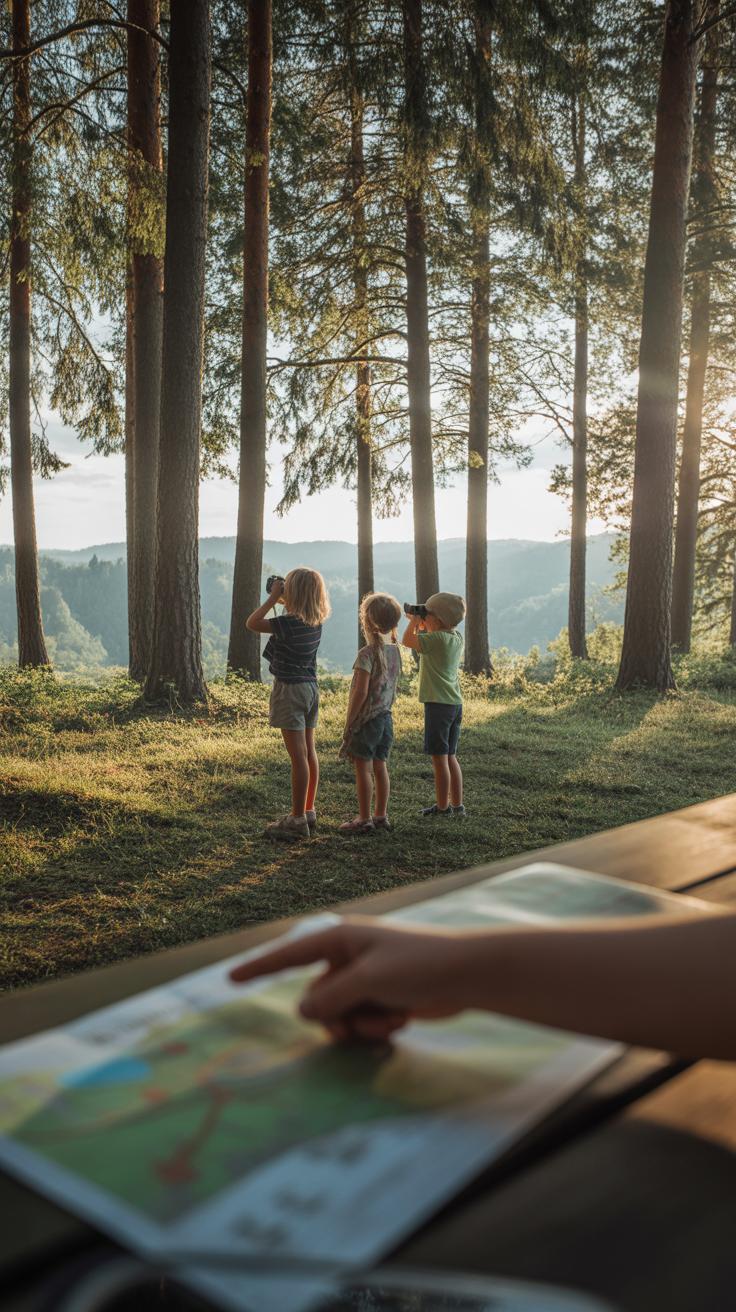
Choosing the right spot for a nature scavenger hunt matters a lot. You want a place that’s safe and not too overwhelming for kids, but also interesting enough to keep them curious. Parks, community gardens, and quiet forest trails often fit the bill, but it’s not always obvious which one to pick.
How To Assess Suitability Of An Outdoor Area
Start by walking the area yourself first. Check if paths are clear and easy to follow—kids can get frustrated or distracted if it’s tricky to navigate. Look out for potential hazards like poison ivy, steep drops, or busy roads nearby.
Think about what kind of natural items are there. Does the place have diverse plants, rocks, insects, or bird activity? A spot with variety keeps the hunt interesting, even if some parts seem a bit plain at first glance.
Safety and accessibility are key. Can you easily reach the place with little ones? Are there benches or shaded spots for breaks? These small details make the experience smoother and less stressful for everyone.
Examples Of Great Spots For Nature Hunts
Local city parks are often the easiest choice. They usually have clear trails, some plant variety, and areas designed for kids to roam safely. I remember one park that had little ponds, which added a fun challenge to find water insects or watch frogs.
Botanical gardens can be great too, though sometimes they charge entry fees. Kids might get to see different plants from around the world in one place. It’s a chance to spot things they wouldn’t find in a neighborhood park.
Then there are forest preserves or nature reserves. These spots offer rich diversity, but they might require a bit more caution. You’ll want to pick well-marked trails and stay within designated areas, especially if kids are younger or less experienced outdoors.
Ultimately, trust your own sense of what feels manageable and interesting for your group. It may take some trial and error to find that perfect spot, but it’s worth trying a few places to see what sparks the most joy and discovery.
Encouraging Observation And Critical Thinking
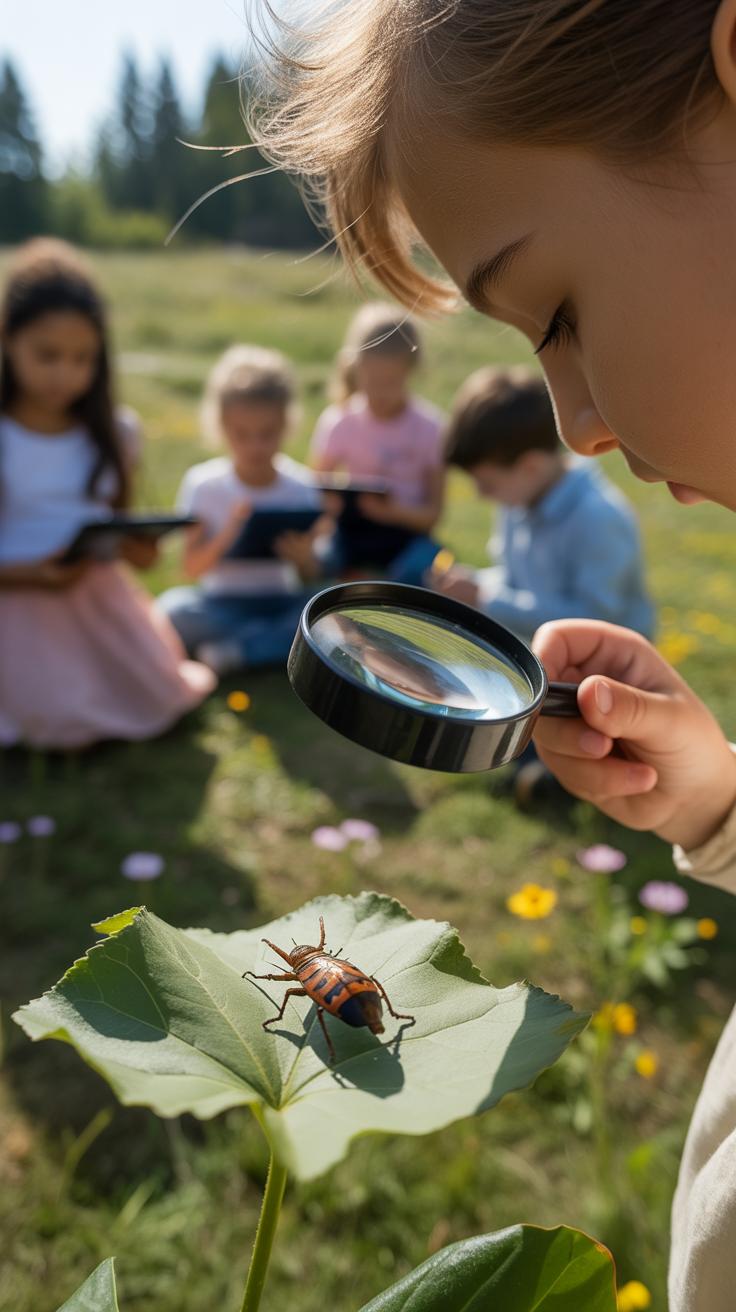
A nature scavenger hunt naturally pushes kids to slow down and really look around, catching details they might otherwise miss. When they’re hunting for leaves, bugs, or rocks, they start to notice differences—like colors, shapes, sizes—that might seem small but are actually important. This slows their pace and opens their eyes to the little things in nature. Over time, they begin asking themselves, “Why does this leaf have holes?” or “What kind of bug crawls so slowly?” This kind of questioning is where critical thinking quietly seeps in.
You’ll find that the hunt creates a space where children practice not just spotting what’s visible but wondering about it too. It’s a bit like detective work, which many kids enjoy, even if they don’t realize they’re learning. This kind of curiosity builds habits of observation that reach beyond the game itself—perhaps staying with them on their next walk or outside break.
Questions To Ask During The Hunt
To nudge their minds a little more, try asking simple but open questions as they explore, such as:
- What colors do you see? Are they bright or dull? Why might that be?
- Can you find something that feels rough? How is it different from something smooth?
- Why do you think that bug is crawling here and not somewhere else?
- Do you see any signs that animals might live in this area?
- How does this plant feel compared to ones you’ve seen before?
These questions don’t demand right answers. Instead, they invite thinking and noticing. They encourage kids to pause and consider the world more carefully rather than rushing past.
Activities To Extend Learning Post Hunt
After the hunt, kids often have a bunch of items or stories to share. It helps to bring the learning home in ways that keep their interest alive. For example, drawing or painting the things they found lets them reflect on details they remembered or found intriguing. Sometimes kids notice things through art that they didn’t mention out loud during the hunt.
Discussing where different plants or animals live can come next. You might chat about why some creatures prefer shady spots while others bask in the sun. Maybe look up a few plants online or in books to see how they fit into the larger ecosystem. This isn’t about memorizing facts, but about making connections and seeing that nature is more complex than it looks.
These follow-up activities turn the scavenger hunt into a stepping stone for deeper curiosity—without feeling like homework. They allow kids to share what they found with you or friends in thoughtful ways, and sometimes they’ll surprise you with questions you hadn’t thought to ask.
Making The Hunt Fun And Interactive
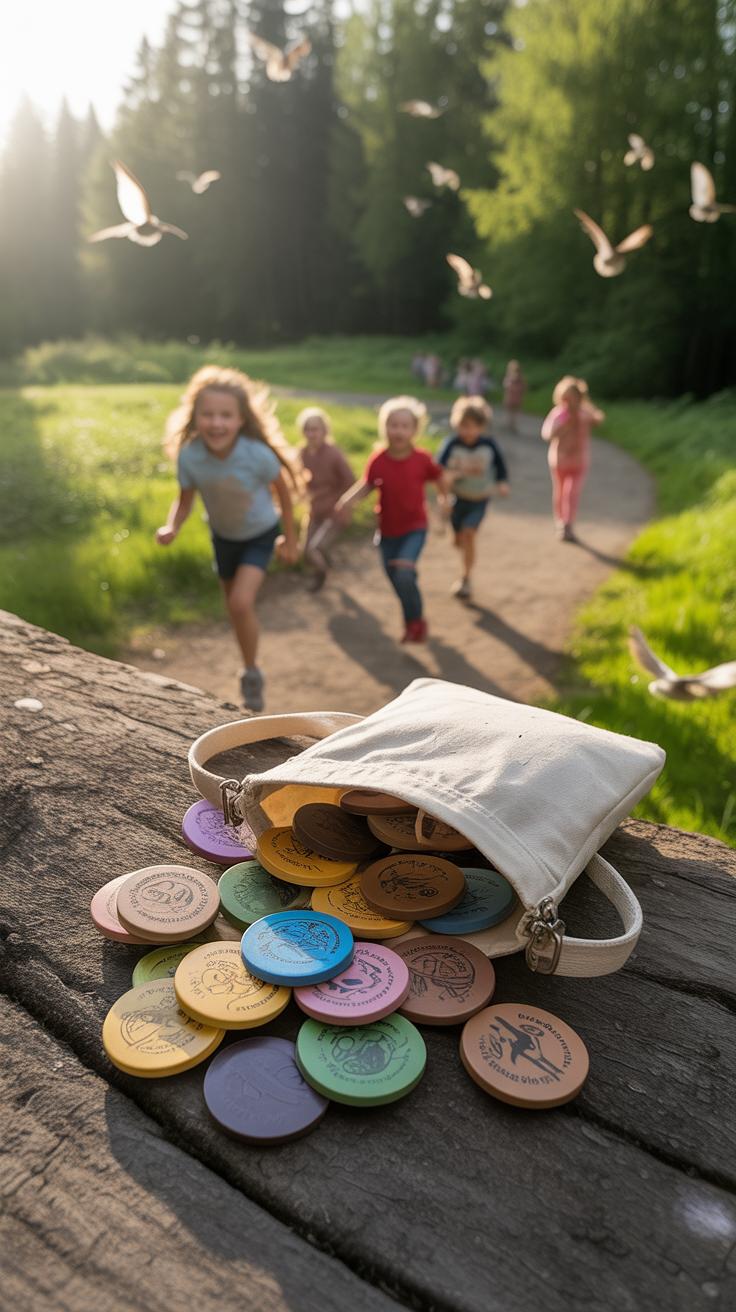
Keeping kids interested throughout a nature scavenger hunt can be a bit tricky sometimes. One way to keep the energy alive is by offering small prizes—not necessarily big or fancy, but little tokens that celebrate each find. Think stickers, badges, or even a chance to choose the next location. This can make children feel recognized and push them to keep looking around with fresh eyes.
Breaking up the hunt into teams is another approach that works well. Kids often enjoy collaborating or even a friendly competition. Teams bring in teamwork and some light strategy, which makes the experience richer. And it’s not just about who finishes first; sharing discoveries with teammates adds a sense of achievement and connection.
Storytelling can really spark excitement too. Encourage kids to imagine a story behind an unusual leaf or a curious bug they’ve found. Perhaps one leaf tells the tale of a forest giant, or a feather hints at a journey across the skies. This turns the hunt into a creative exercise as well, blending discovery with imagination in a way that feels natural and fun.
Using Games And Challenges
Adding simple games can break the routine and add new layers of fun. For example, try a “silent hunt,” where the kids have to find items without talking. It’s amazing how this quietness sharpens their senses and attention.
Or introduce a challenge where children find objects by shape or color only, rather than by name. This shifts their thinking and encourages them to notice aspects they might usually overlook.
You could also time small rounds, letting kids race against the clock to find something unusual. It’s a mix of thrill and focus that sometimes brings out unexpected enthusiasm. Though sometimes the pressure can be too much, so it’s good to gauge how the group is responding.
Celebrating The Results Together
After the hunt, gathering to share discoveries makes all the difference. Kids love telling stories about the things they found, and it’s a chance for adults to ask questions that deepen curiosity.
Sometimes, I’ve noticed that kids remember their favorite finds more clearly when they can show them around or describe how they came across them. It’s almost like the telling becomes part of the memory.
Consider making a small “nature gallery” with photos or drawings of their finds. This anchors their experience and motivates them to look even closer next time. Celebrations don’t have to be elaborate—simple acknowledgment goes a long way in reinforcing positive feelings about exploring outdoors.
Adapting The Hunt For Different Age Groups
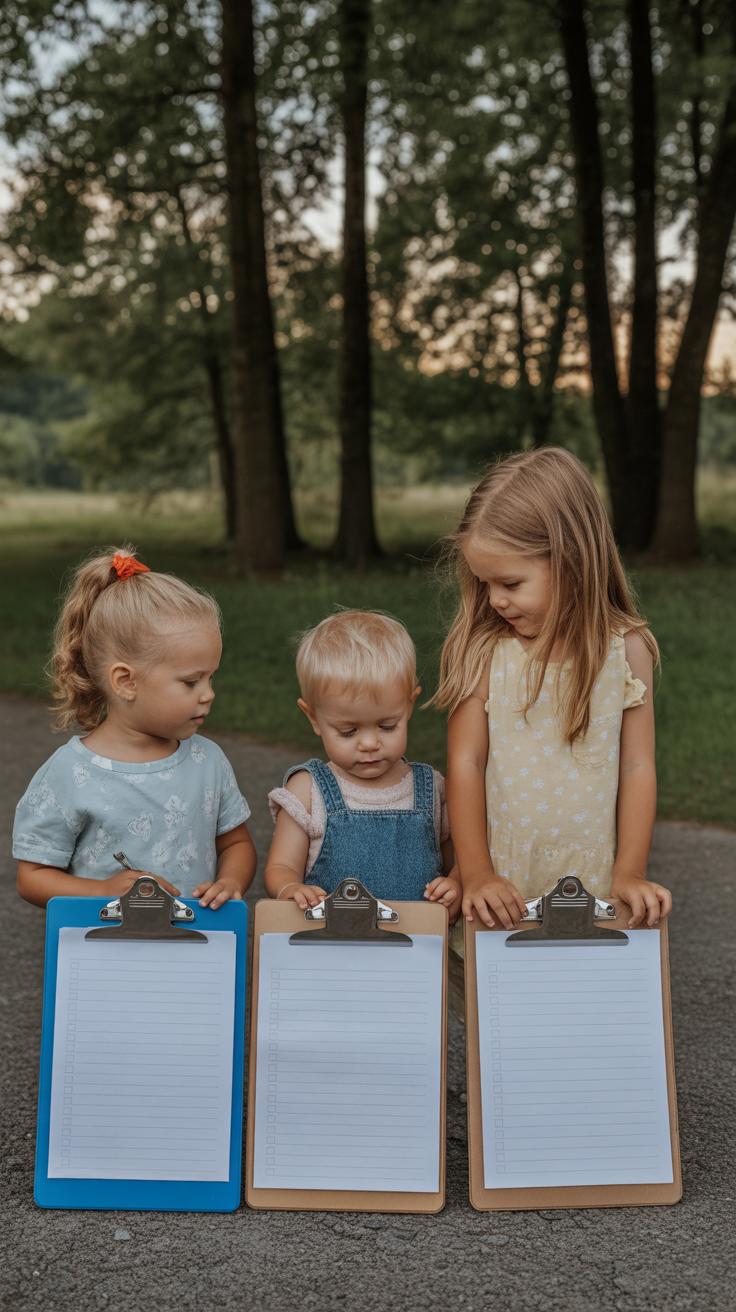
When planning a nature scavenger hunt, thinking about the ages of the kids makes a big difference. Toddlers, younger children, and older kids need different approaches to keep things just right—not too easy, but not too frustrating either.
Ideas For Younger Children
For toddlers and preschoolers, simplicity is key. Instead of tricky clues, focus on items that pop out in nature, like:
- Brightly colored leaves
- Small rocks or pinecones
- Simple shapes, like a flower or a stick shaped like the letter “Y”
The task can be just spotting the object or maybe picking it up with gentle hands. You might say, “Can you find something soft?” instead of giving a long list of words. This keeps it light and playful.
Sometimes, the little ones get distracted or tired quickly. So, short hunts with a few easy finds work best.
Challenges For Older Children
Older kids often crave more challenge. They might enjoy puzzles within the scavenger hunt, like:
- Finding a leaf from a specific tree species
- Spotting signs of animal activity, like tracks or nests
- Decoding riddles that lead them to natural features
Sometimes, you can send them looking for things that aren’t visible right away, encouraging close observation or even patience. I’ve noticed that older children tend to engage deeply when the clues require some thinking but are still solvable with a little effort. It’s like a mix of a treasure hunt and detective work.
Of course, some rare finds might be too hard for younger kids but perfect for these more seasoned explorers.
So, it’s largely about tuning the tasks so they fit the group’s energy, curiosity, and skill level. That way, everyone stays interested without feeling bored or overwhelmed.
Using Technology To Enhance The Experience
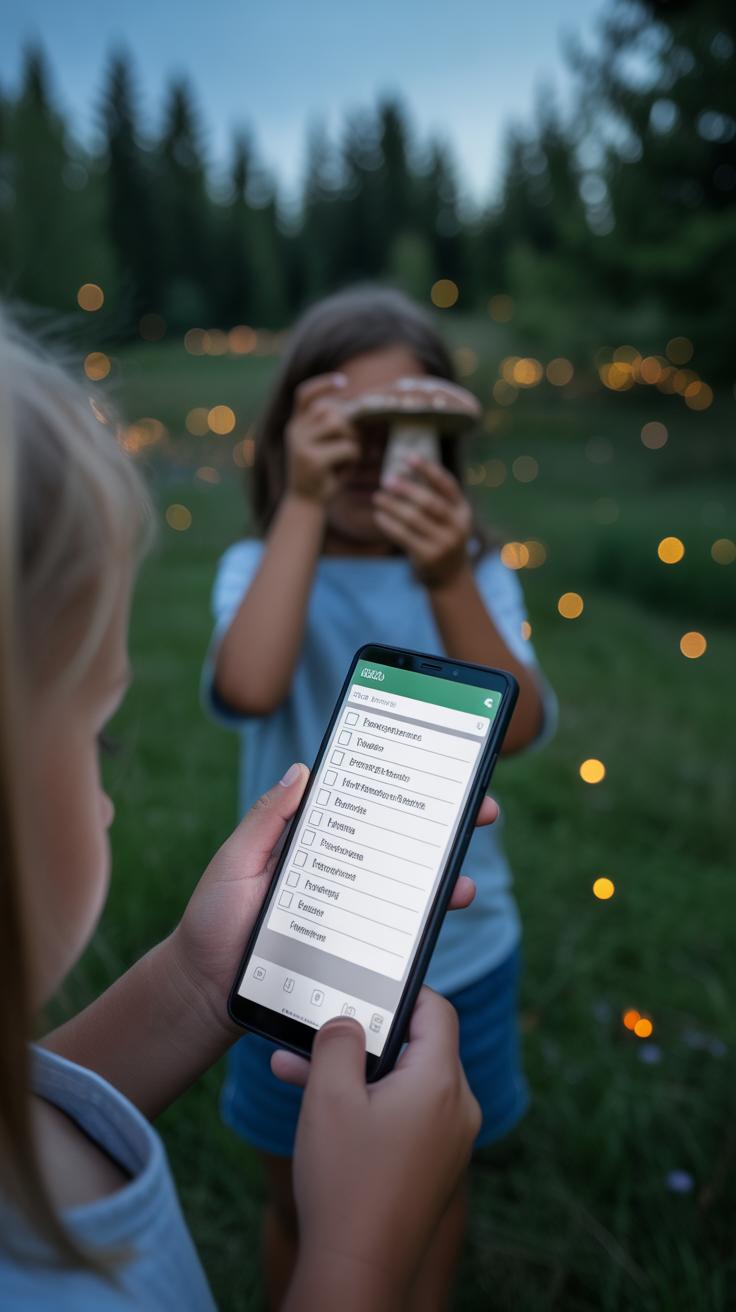
Smartphones and cameras have changed the way kids interact with nature scavenger hunts. Instead of just collecting items or checking off lists, children can snap photos of their finds. This photo-based approach brings a fresh sense of excitement and turns the hunt into more of a creative challenge. Kids often enjoy framing their shot, deciding the best angle or lighting. It’s surprising how much this simple change can boost their curiosity and involvement.
Taking pictures doesn’t just add fun. It actually helps kids remember their discoveries better. When they pause to take a photo, they spend extra moments observing details. This slows the rush, making the experience stick in their minds longer. Later, looking back at these pictures sparks stories and questions, turning the day’s adventure into a kind of visual diary that’s easy—and even fun—to share with family and friends.
Parents can also tap into several apps to organize hunts more smoothly. Some apps let you create custom lists, add hints, or even time the event. Others allow kids to upload photos directly, keeping everything in one place and making the results easy to review. These tools vary, but a few that come to mind are “GooseChase,” “Scavify,” and “Actionbound.” Exploring these might take a little effort, but they can give even small backyard hunts a fresh spark. Plus, they keep the whole family engaged without losing the simple joy of being outdoors.
Conclusions
Creating a nature scavenger hunt for kids allows them to connect with the outdoors while having fun. This activity supports their curiosity and helps them develop observation and problem-solving skills. By using a creative checklist, you guide children to discover interesting natural items and enjoy their time outside.
Encourage your children to respect nature and be safe during their adventures. Tailoring the scavenger hunt to your local environment and your child’s interests will make each outing unique and memorable. Start planning your own nature scavenger hunt to inspire young explorers today.


